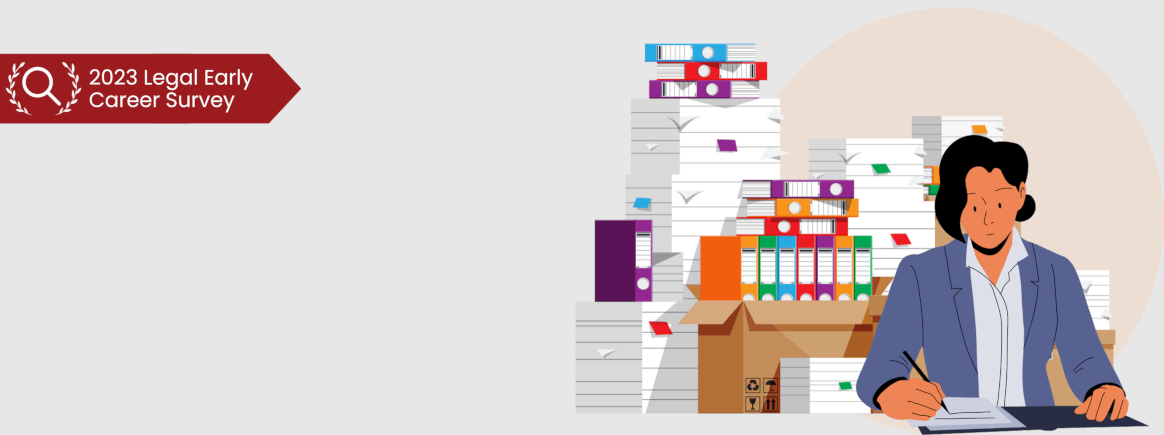
Increasing File Complexity: Why Is It Happening and Four Strategies to Reduce the Burden
In recent years, the landscape of litigation in Canada has undergone a significant transformation, marked by a notable rise in the complexity of legal files. In our recent survey conducted among legal firms in Canada, a significant 52% expressed growing concerns about this surge in file complexity. This surge poses myriad challenges for law firms across the country, affecting their operations and efficiency. In this blog post, we will explore the factors contributing to the increased complexity of litigation files, analyze the adverse effects on Canadian law firm operations, and propose four strategic approaches to counteract these negative effects.
Understanding the Rise in Litigation File Complexity
1. Evolving Legal Frameworks
One of the primary contributors to the increasing complexity of litigation files in Canada is the continuous evolution of legal frameworks. Changes in legislation, precedents set by higher courts, and emerging areas of law often lead to intricate legal arguments and nuanced case strategies. Law firms must invest time and resources to stay abreast of these developments, adding layers of complexity to their litigation files.
2. Technological Advancements
While technology has undoubtedly improved many aspects of legal practice, it has also played a role in increasing the complexity of litigation files. The digital era has ushered in a vast amount of electronically stored information (ESI), requiring law firms to adapt to new tools and methodologies for e-discovery and data management. Navigating through terabytes of electronic data introduces additional challenges and complexities to litigation cases.
3. Complexity of Client Affairs
The intricate nature of client affairs has also become a significant factor contributing to the rising complexity of litigation files in Canada. As clients engage in increasingly complex business activities, legal issues become more intricate, encompassing a broad spectrum of challenges. Managing multifaceted client relationships, intricate contractual arrangements, and navigating diverse regulatory landscapes add layers of complexity to litigation cases. Law firms must develop a nuanced understanding of their clients' operations and industries to effectively address the complexities arising from diverse and intricate client affairs.
Negative Effects on Canadian Law Firm Operations
1. Increased Workload and Time Constraints
The growing complexity of litigation files places an unprecedented burden on legal professionals, leading to increased workloads and time constraints. Lawyers are required to invest more hours in research, case analysis, and preparation, often at the expense of work-life balance. This can lead to burnout, reduced productivity, and diminished overall job satisfaction within law firms.
2. Escalating Costs
The intricate nature of modern litigation files translates into higher operational costs for law firms. Increased time spent on cases, the need for specialized technological tools, and the demand for expert consultants all contribute to escalating expenses. As law firms struggle to manage these rising costs, it becomes imperative to find innovative solutions to maintain profitability and sustainability.
3. Client Expectations and Pressure
Clients, too, are impacted by the complexity of litigation files. They expect their legal representatives to navigate the intricate details of their cases efficiently, providing sound advice and successful outcomes. The pressure to meet these expectations can strain client-lawyer relationships and place additional stress on law firm operations.
4. Risk of Errors and Inefficiencies
With the surge in complexity, there is an inherent risk of errors and inefficiencies in legal proceedings. Overwhelmed by intricate details, lawyers may overlook critical aspects of a case, leading to suboptimal outcomes. The potential for mistakes can harm the reputation of law firms and erode client trust, further complicating the operational challenges they face.
Strategies to Counteract Negative Effects
1. Invest in Advanced Legal Technology
To tackle the challenges posed by the technological advancements contributing to the complexity of litigation files, law firms should invest in cutting-edge legal technology. Implementing robust e-discovery tools, case management systems, and artificial intelligence applications can streamline data analysis, enhance research capabilities, and improve overall efficiency. Embracing technology not only helps in managing complex cases but also positions law firms as forward-thinking and adaptable.
2. Specialized Training and Continuous Education
Given the evolving legal landscape, law firms must prioritize ongoing training and education for their legal professionals. Specialized training programs focused on emerging areas of law, technological advancements, and international legal frameworks can empower lawyers to navigate complex litigation files more effectively. This commitment to professional development not only enhances the expertise of legal teams but also strengthens the overall capabilities of the law firm.
3. Collaborative Approach and Interdisciplinary Teams
Addressing complex litigation files requires a collaborative approach within law firms. Establishing interdisciplinary teams that bring together legal experts, technologists, data analysts, and industry specialists can provide a holistic perspective on complex cases. This approach fosters creativity, enhances problem-solving capabilities, and ensures that all facets of a case are thoroughly examined. Collaboration also allows for the efficient allocation of resources, mitigating the burden on individual lawyers.
4. Strategic Client Communication and Expectation Management
Law firms can proactively address the challenges arising from client expectations and pressure by adopting strategic communication practices. Clear and transparent communication with clients regarding the complexities of their cases, potential timelines, and associated costs helps manage expectations. Law firms should also prioritize client education, explaining the intricacies of the legal process and the factors contributing to the complexity of their specific case. Managing expectations from the outset can contribute to stronger client relationships and a more realistic understanding by the client of the challenges at hand.
Conclusion
As the complexity of litigation files continues to rise in Canada, law firms face a critical juncture in adapting to this new legal landscape. By understanding the factors contributing to this complexity, recognizing the negative effects on law firm operations, and implementing strategic approaches to counteract these challenges, legal professionals can navigate the intricate details of modern litigation successfully. Embracing technology, investing in education, fostering collaboration, and strategically managing client expectations are key pillars in ensuring the continued effectiveness and resilience of Canadian law firms in the face of evolving legal complexities.
You may also like
Happy Holidays Message from David Swadden, CEO
December 18, 2025
We would like to wish all our clients and readers a wonderful holiday season filled with joy and laughter.
Tracument Holiday Schedule
December 11, 2025
We would like to update all our clients of our Holiday Schedule this holiday season!
Tracument Wrapped!
December 4, 2025
What 2025 Looked like for Tracument and for you!




